July 13, 2025
This year, Bazaarvoice “Holiday Consumer Shopping Report 2025” has unveiled a fascinating shift in how consumers approach the festive season, moving far beyond impulse buys to embrace intentionality, digital discovery, and a surprising re-evaluation of trust.
Forget everything you thought you knew about holiday shopping, because 2025 is rewriting the rules. The era of the “smart holiday shopper” is here, driven by a desire for value, authenticity, and seamless experiences.
Key takeaways: What’s driving holiday shopping in 2025?
This year’s report highlights several standout behaviors that every shopper and brand needs to understand.
1. The early bird gets the deal (and the budget, and the product!)
Gone are the days of last-minute scrambles. Holiday shopping is starting earlier than ever, with October taking the lead in 2025. Consumers are strategically leveraging the early fall window (September-October) to balance deals, budgeting, and product availability.
Just look at the data:
- September is projected to see a +6 point increase in shoppers starting their holiday spree compared to 2024.
- October is also up +4 points, solidifying its position as a prime starting month.
- Conversely, November and December are seeing significant drops, with December plummeting by 8 points.
This intentional early start allows shoppers to spread out purchases and avoid the frantic rush and potential price hikes closer to the holidays.
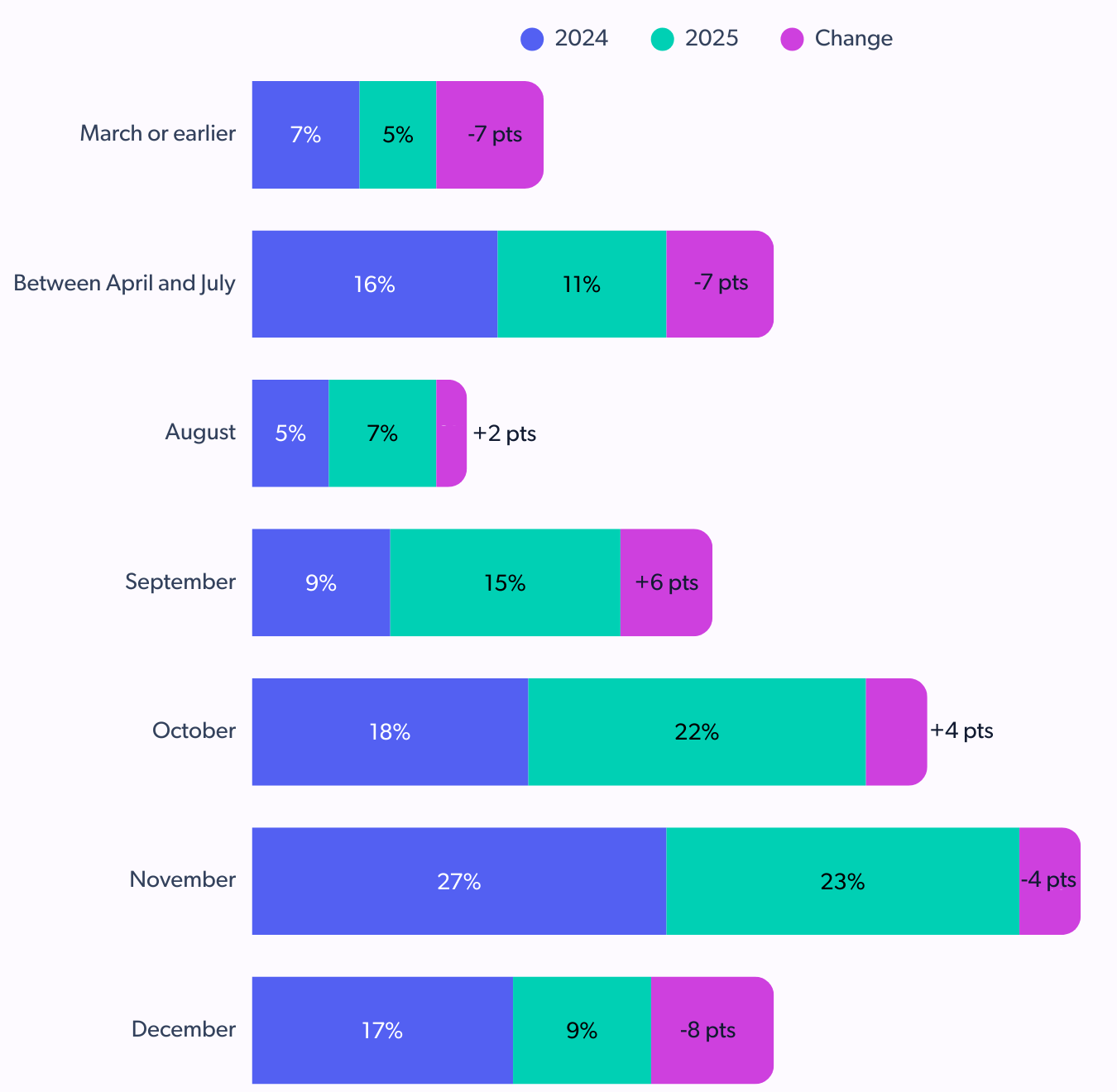
2. Young shoppers are the savvy sale seekers
1 in 2 holiday shoppers likely to buy products that offer free shipping.
While many are starting early, a significant portion of younger shoppers (18-34) are strategically waiting for major sales events like Black Friday and Cyber Monday. Nearly half of them follow this tactic, showing a heightened price consciousness. This demographic also leads the way in buying early to avoid price increases, showcasing a dual strategy of both proactive and reactive savings.
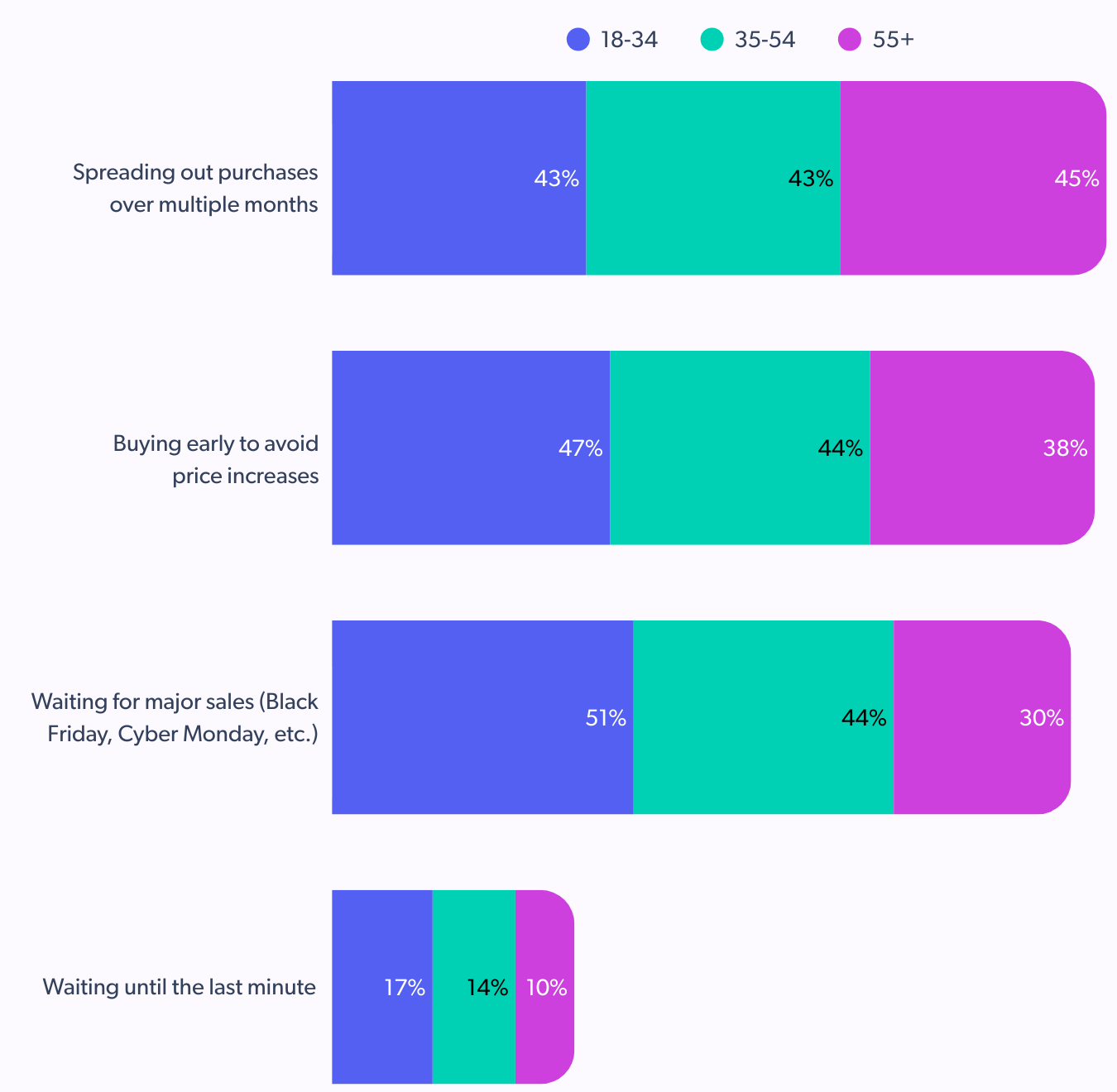
3. Free shipping reigns supreme (Even if it means more in your cart)
Amid economic uncertainty, cost has officially dethroned speed as the top priority.
Free shipping is now the undisputed champion across all age groups. What’s even more intriguing? A notable 35% of younger shoppers (18-34) are willing to add extra items to their cart just to qualify for faster shipping, highlighting the perceived value of convenience tied to cost savings.
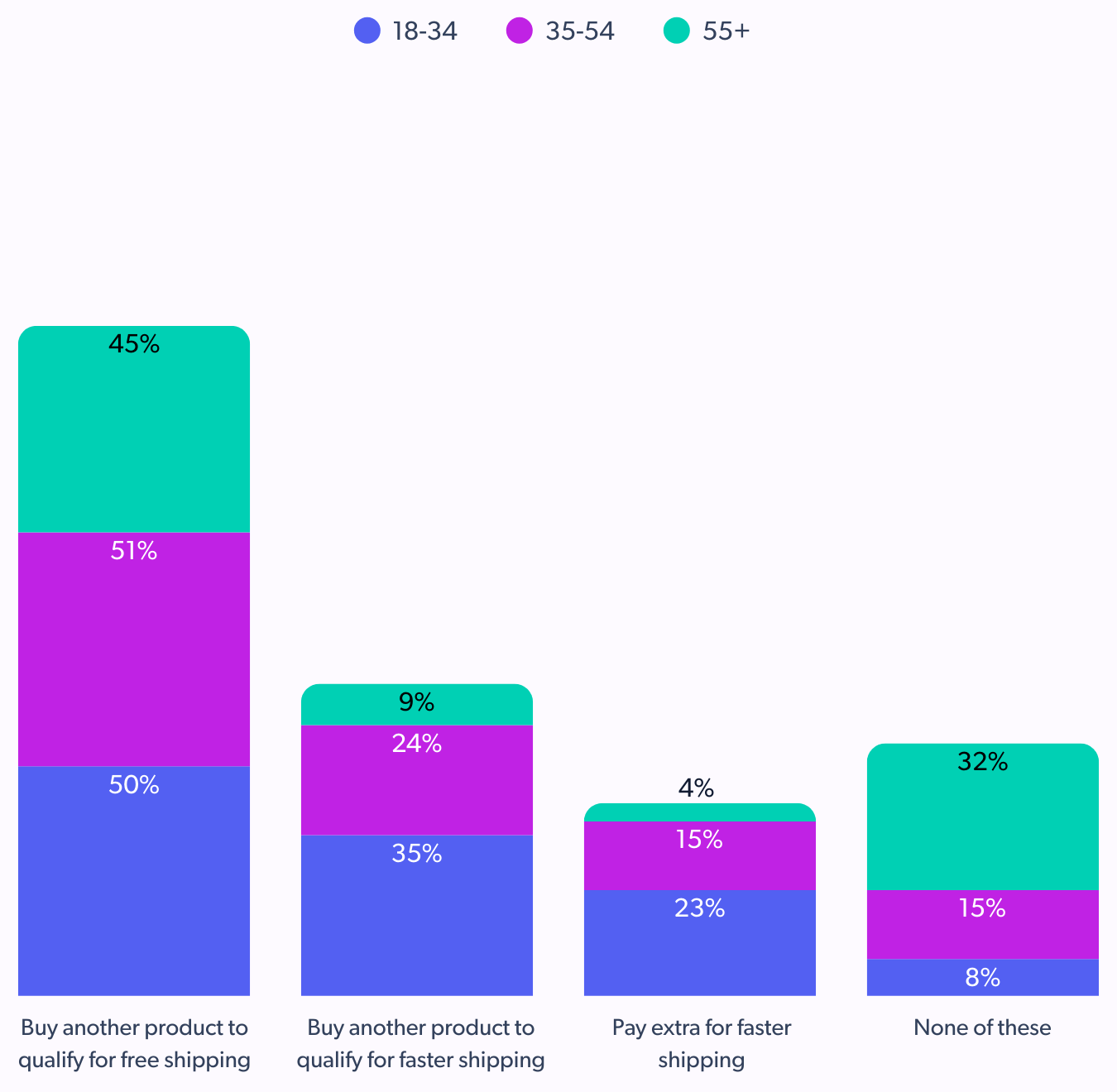
4. 50% young shoppers seek budget friendly options for holiday season
Almost half of young shoppers (18-34) are actively seeking budget-friendly options this holiday season. This signals a significant shift away from automatic allegiance to name brands, with consumers showing a strong inclination towards alternative and store brands. For premium brands, this means a critical need to strengthen their value messaging to remain competitive.
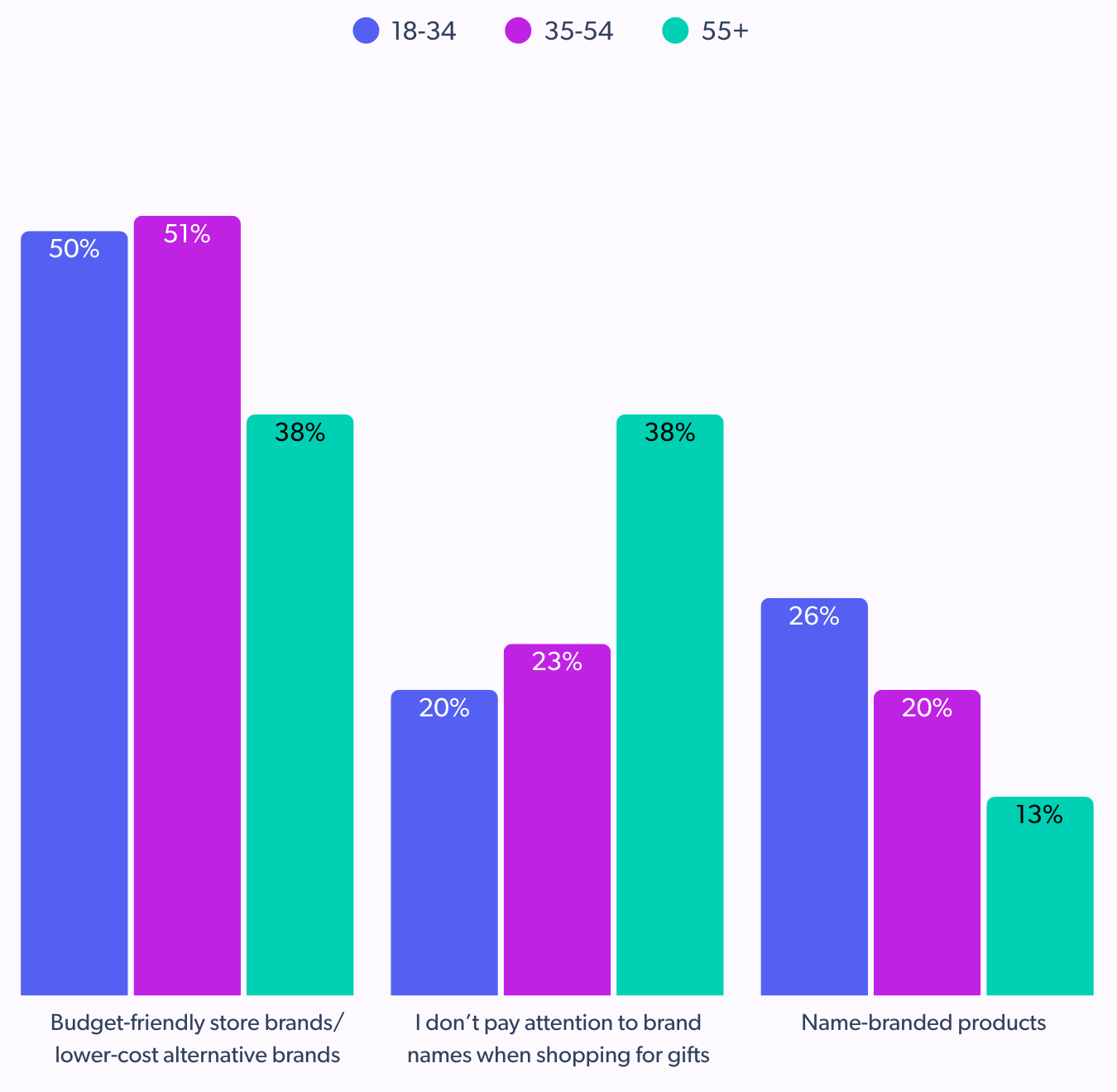
5. Timely deal alerts “extremely helpful”
What do holiday shoppers want most? Relevant, timely, and helpful promotions at various touchpoints. Alerts about deals on products they’ve shown interest in are considered “extremely helpful” by 57% of shoppers, underscoring the importance of personalized and well-timed communication from brands.
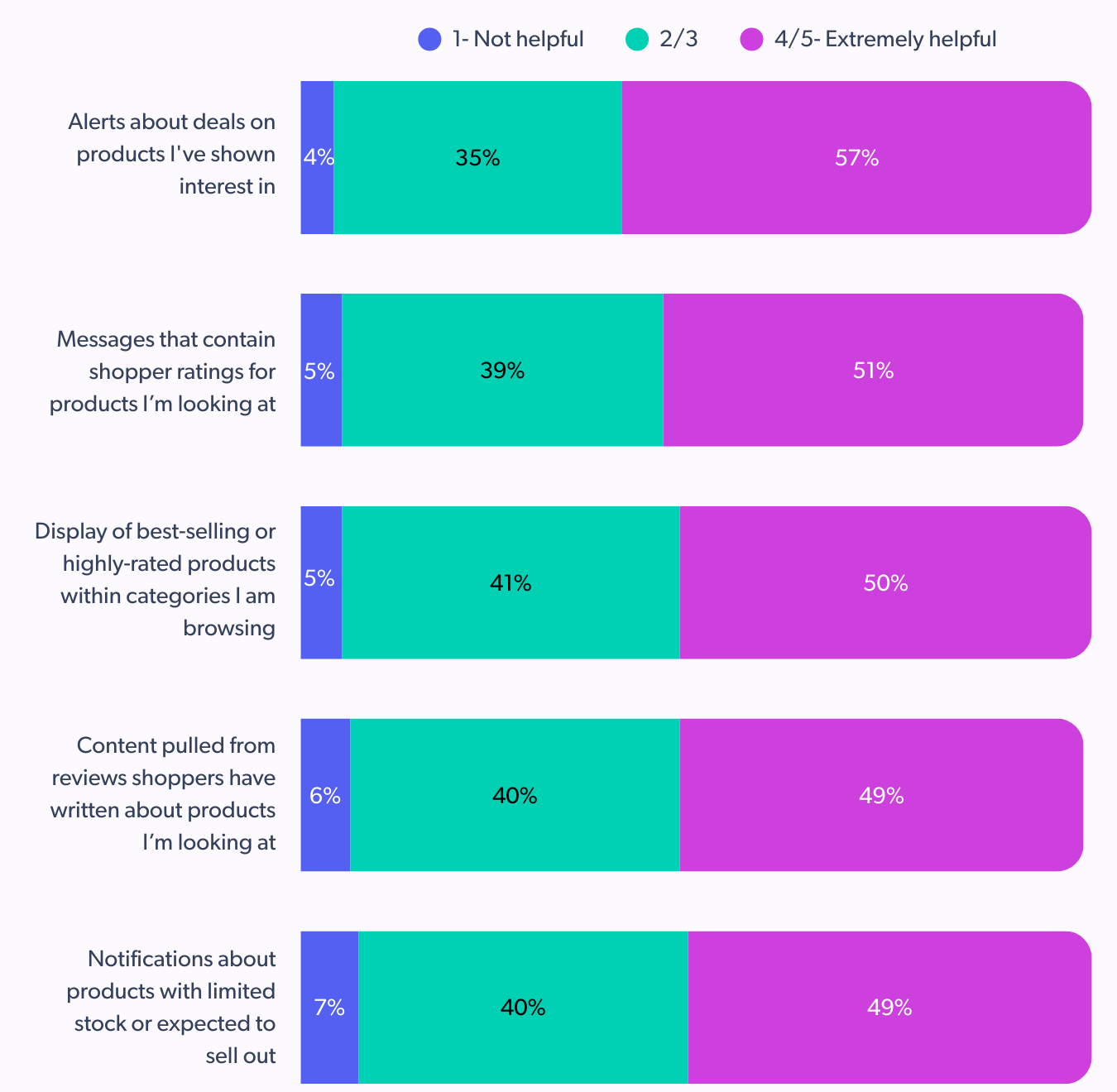
6. Social commerce climbs 9 points year over year
Social media’s role in holiday shopping has transformed from a mere discovery tool into a powerful direct sales channel.
In 2025, 21% of shoppers used social media to purchase holiday gifts, a significant jump from 12% in 2024. This indicates a more complex, multi-touchpoint path to purchase, where social platforms are not just inspiring buys but facilitating them.
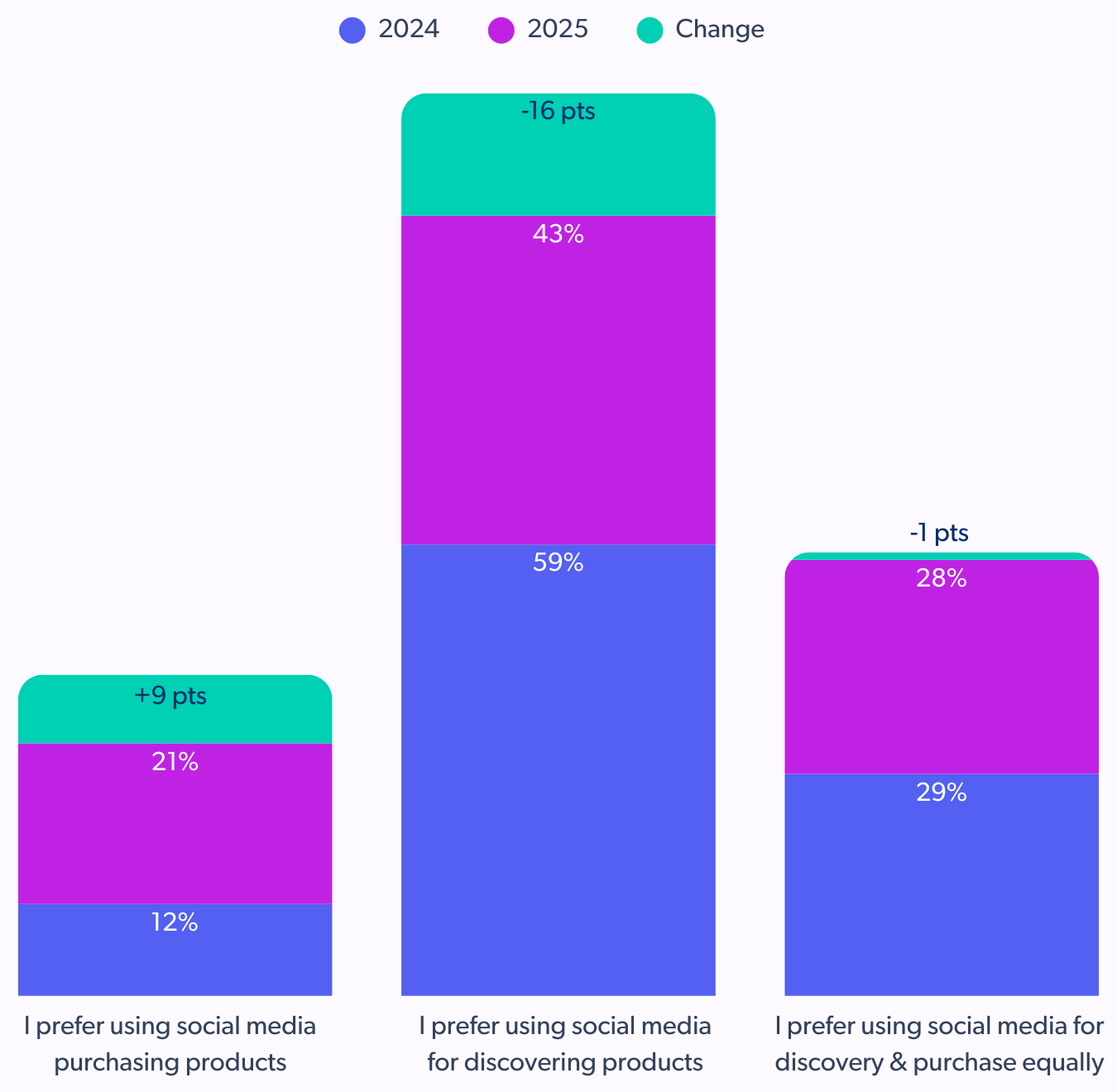
7. Holiday shopping on social media nearly doubles
With 55% of shoppers spending 11-50% of their holiday budget on these platforms in 2025, compared to 33% in 2024, the financial commitment on social media has nearly doubled.
Undeniably, social commerce is shifting from supplementary to mainstream. Similarly, those spending 51–100% jumped from 9% to 15%, meaning 1 in 7 shoppers did at least half their holiday shopping through social platforms.
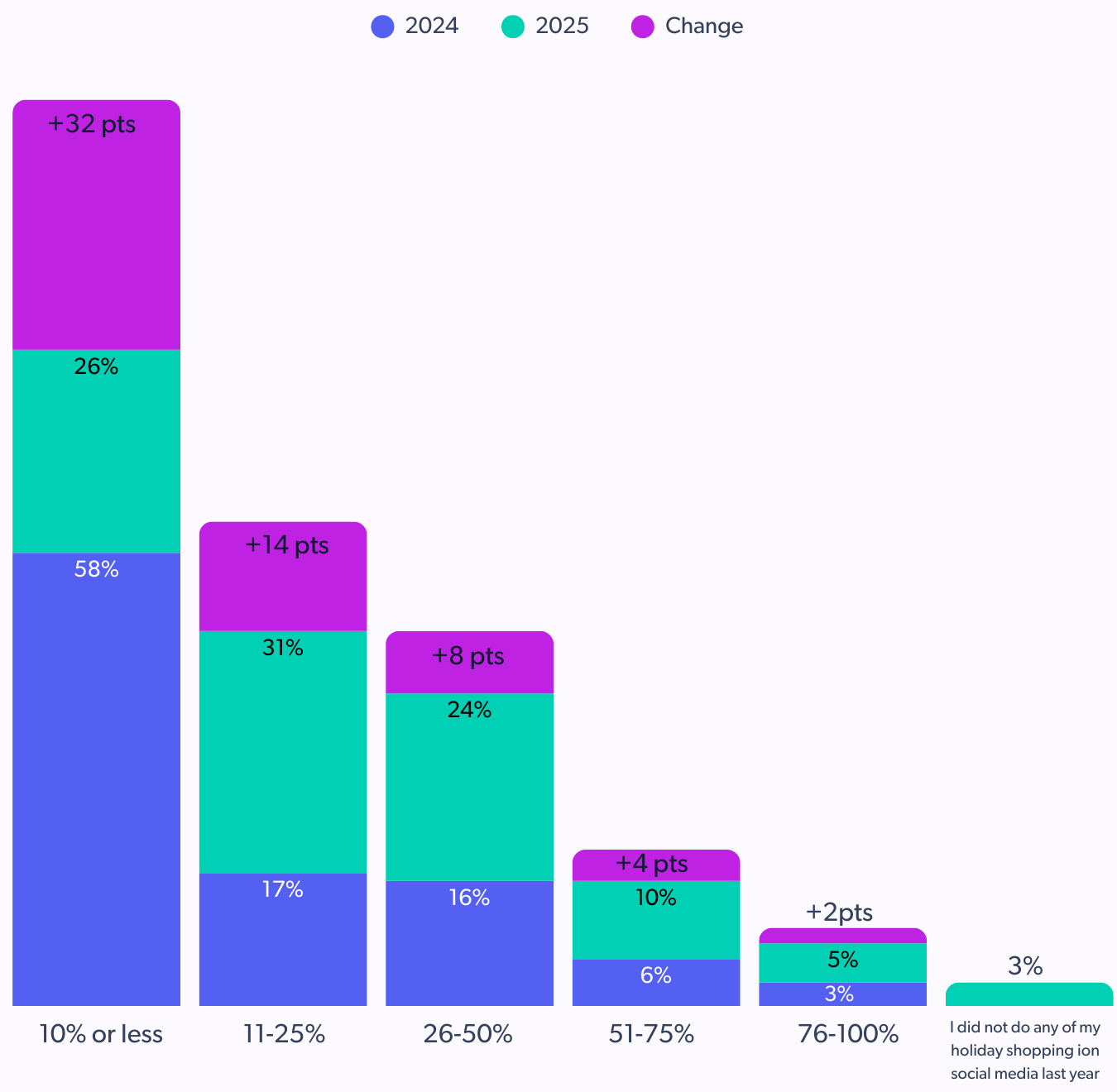
8. And the platforms leading this charge?
TikTok, YouTube, and Instagram are driving the biggest gains in holiday gift influence. TikTok saw a remarkable +10 point increase, YouTube a +9 point increase, and Instagram a +8 point increase in their influence on holiday gift decisions.
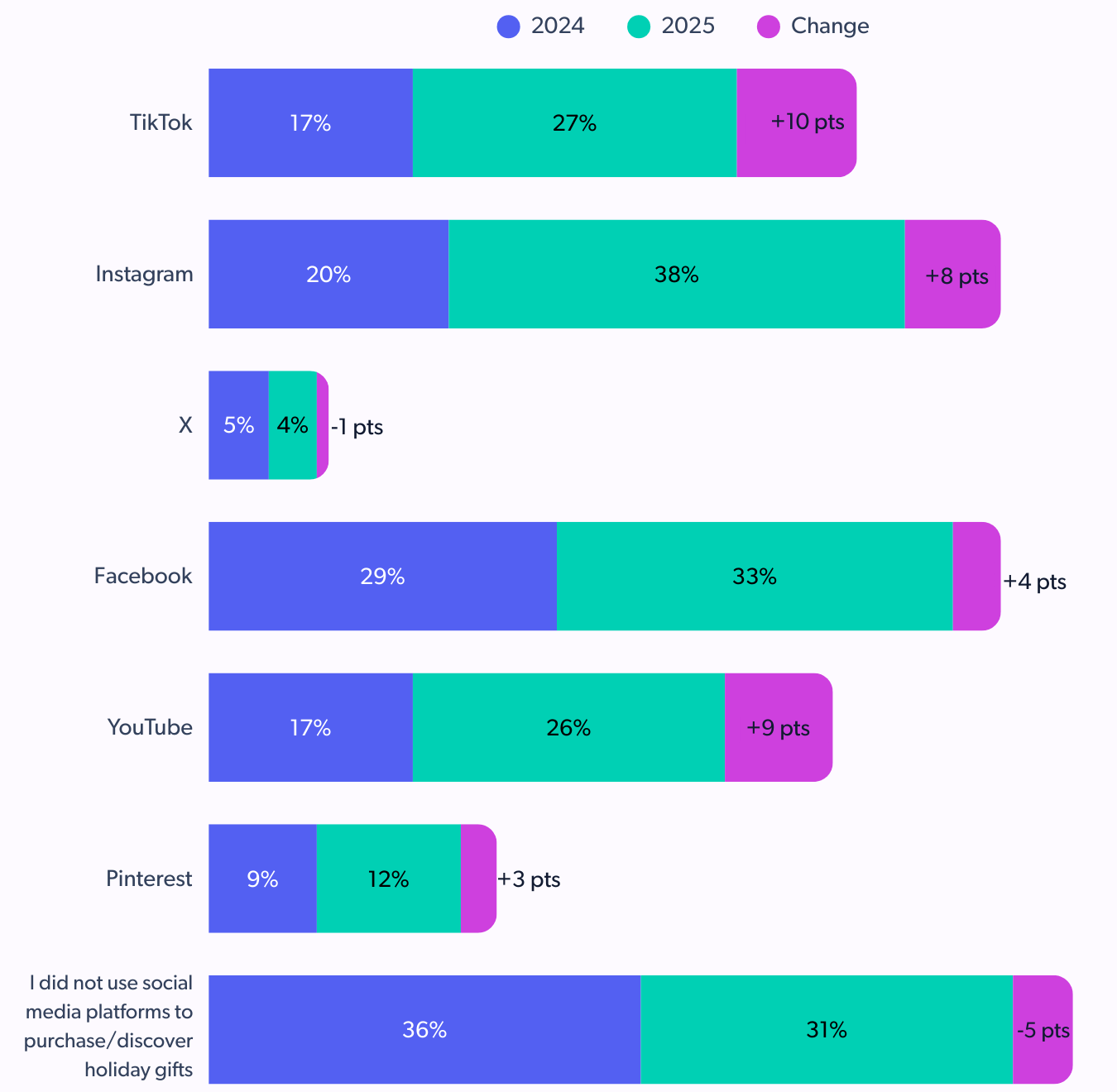
9. Online holiday shopping soars to 82%, leaps from 48%
Shoppers no longer think in isolated channels but they expect seamless journeys. In 2025, it is expected more holiday shoppers are likely to begin their journey online through search engines, retailer sites, and social media, while still highly valuing in-person experiences at malls and local stores.
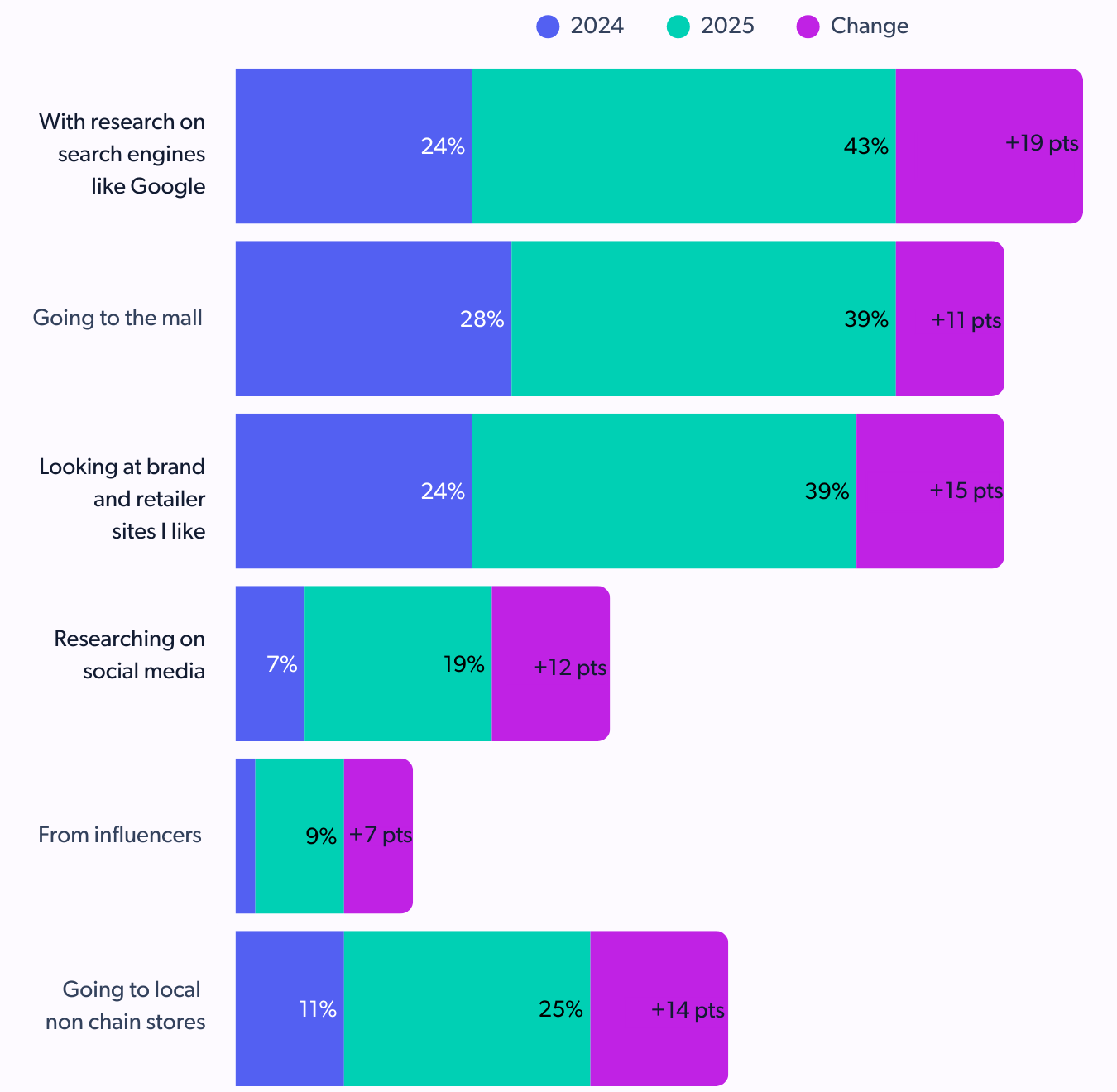
10. Current context matters more than historical data in online holiday shopping
Fifty-one percent of young shoppers prefer contextual recommendations based on real-time behavior over past shopping history, with 84% of 18-34 year olds being receptive to personalization overall.
This means brands need to adapt their recommendation engines to be more dynamic and responsive to immediate user intent.
Context matters more than history as 51% young shoppers prefer contextual recommendations, those based on real-time behavior over past shopping history. Overall, 84% of 18-34s are most receptive to personalization overall.
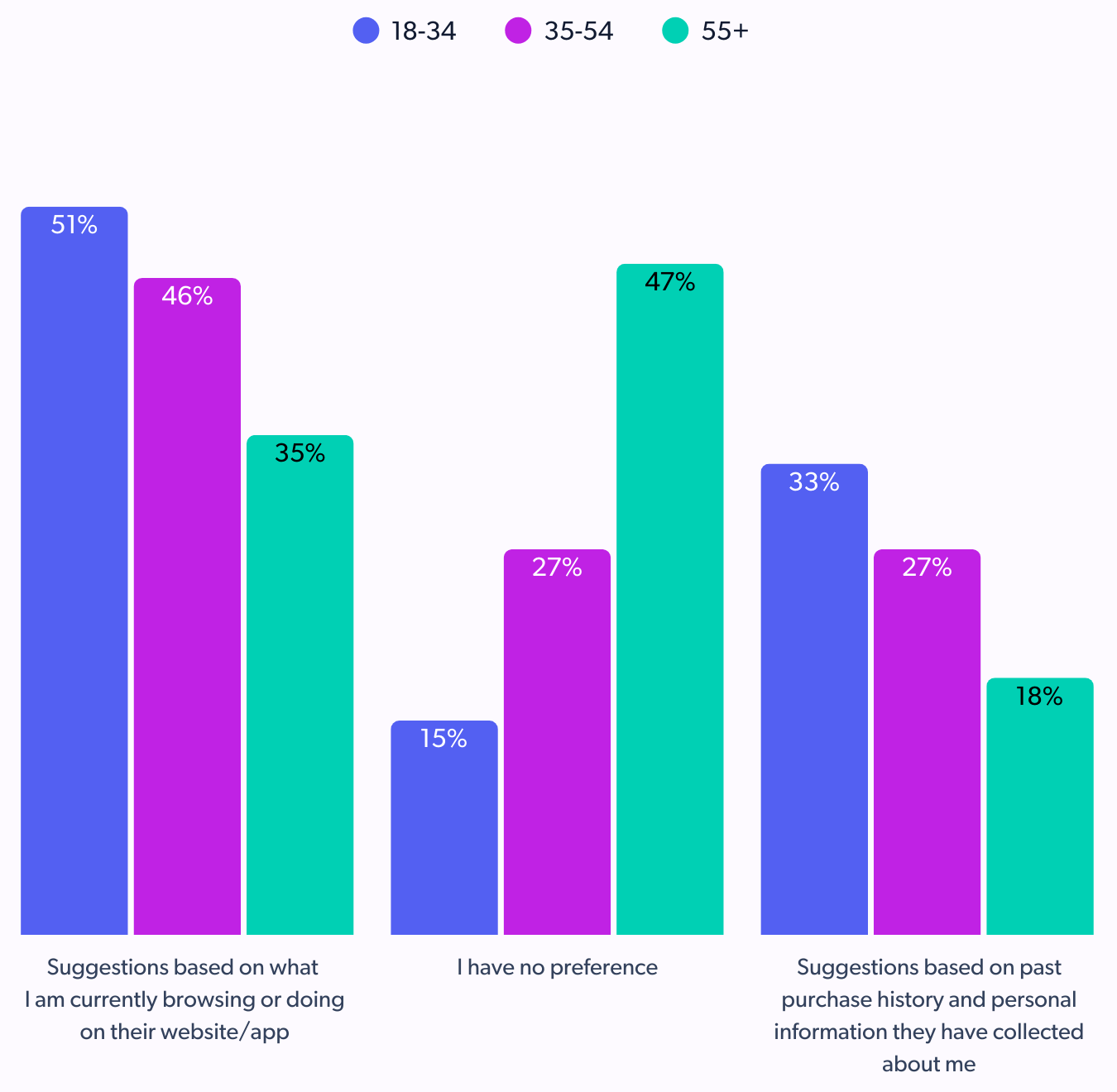
11. Trust in creator content during holiday shopping increases 30% points
Trust in content creator recommendations during the holidays has seen a dramatic increase, jumping by 30 percentage points to 42% in 2025. This is a powerful testament to the growing sway of authentic voices online.
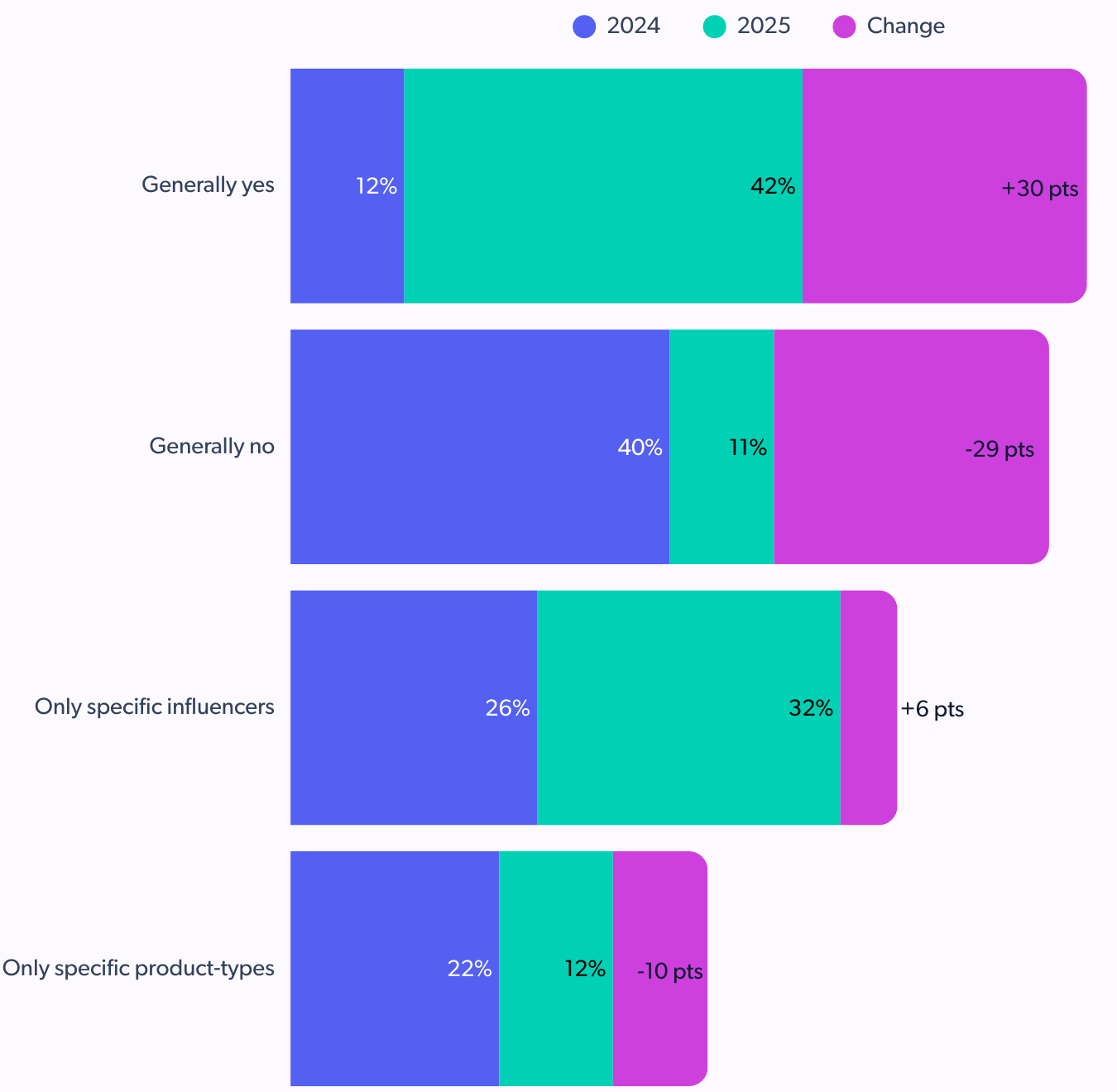
12. Holiday shoppers are turning to peers and micro-influencers for gift recommendations
Younger shoppers (18-34) are most open to influencer recommendations, with 52% preferring them over personal networks.
Within this, micro-influencers (10K-100K followers) hold significant sway, preferred by 30% of this demographic. This suggests that relatability and niche expertise are becoming more impactful than broad reach.
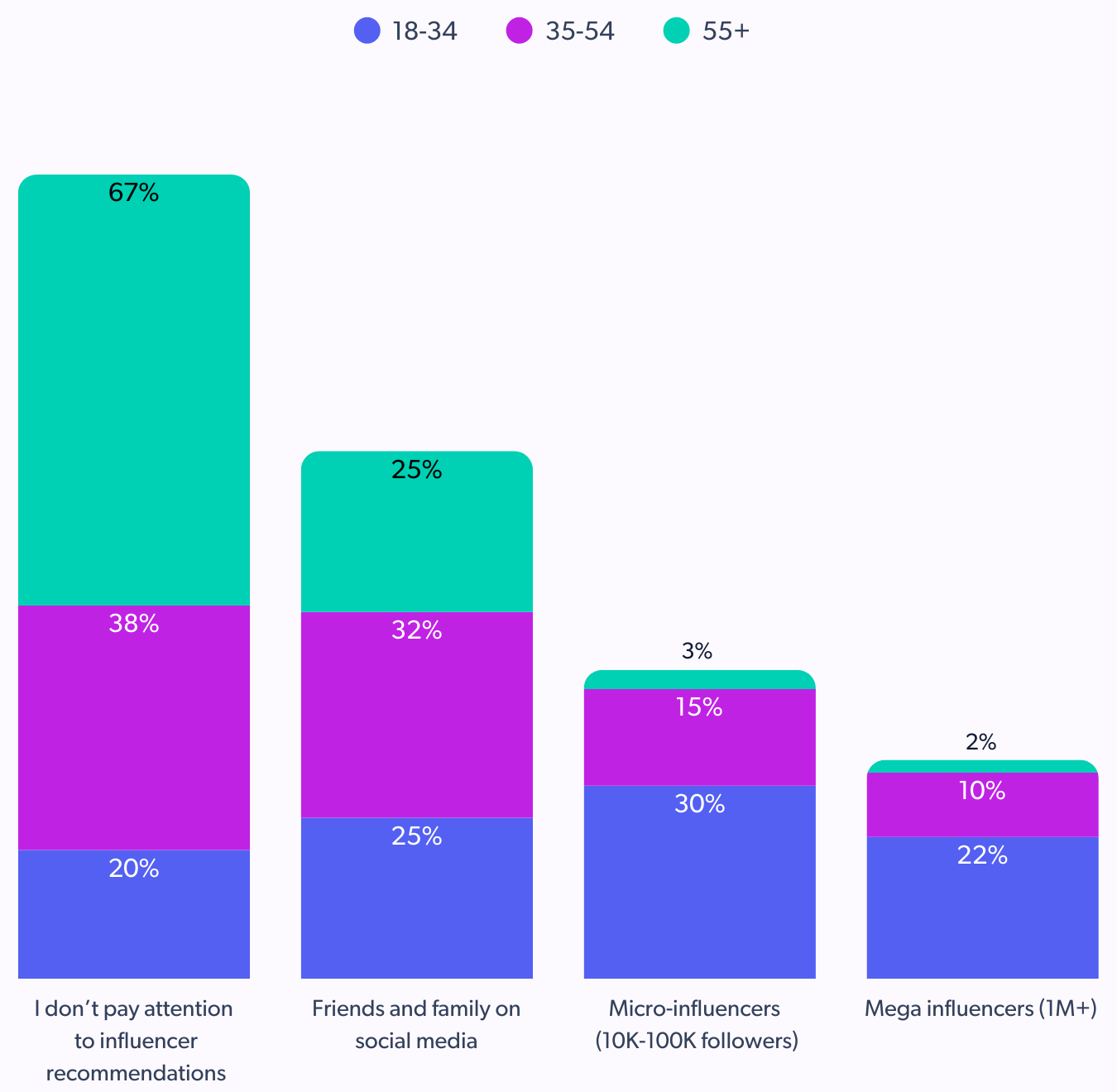
13. Holiday shopping means checking reviews for authenticity up from 40% to 50%
As shoppers become savvier, their vigilance regarding reviews is at an all-time high. The number of shoppers checking reviews for authenticity has increased from 40% to 50%. Consumers are now more sophisticated, actively examining reviews for human-like writing, looking for third-party authentication symbols, and checking for a balance of positive and negative feedback.
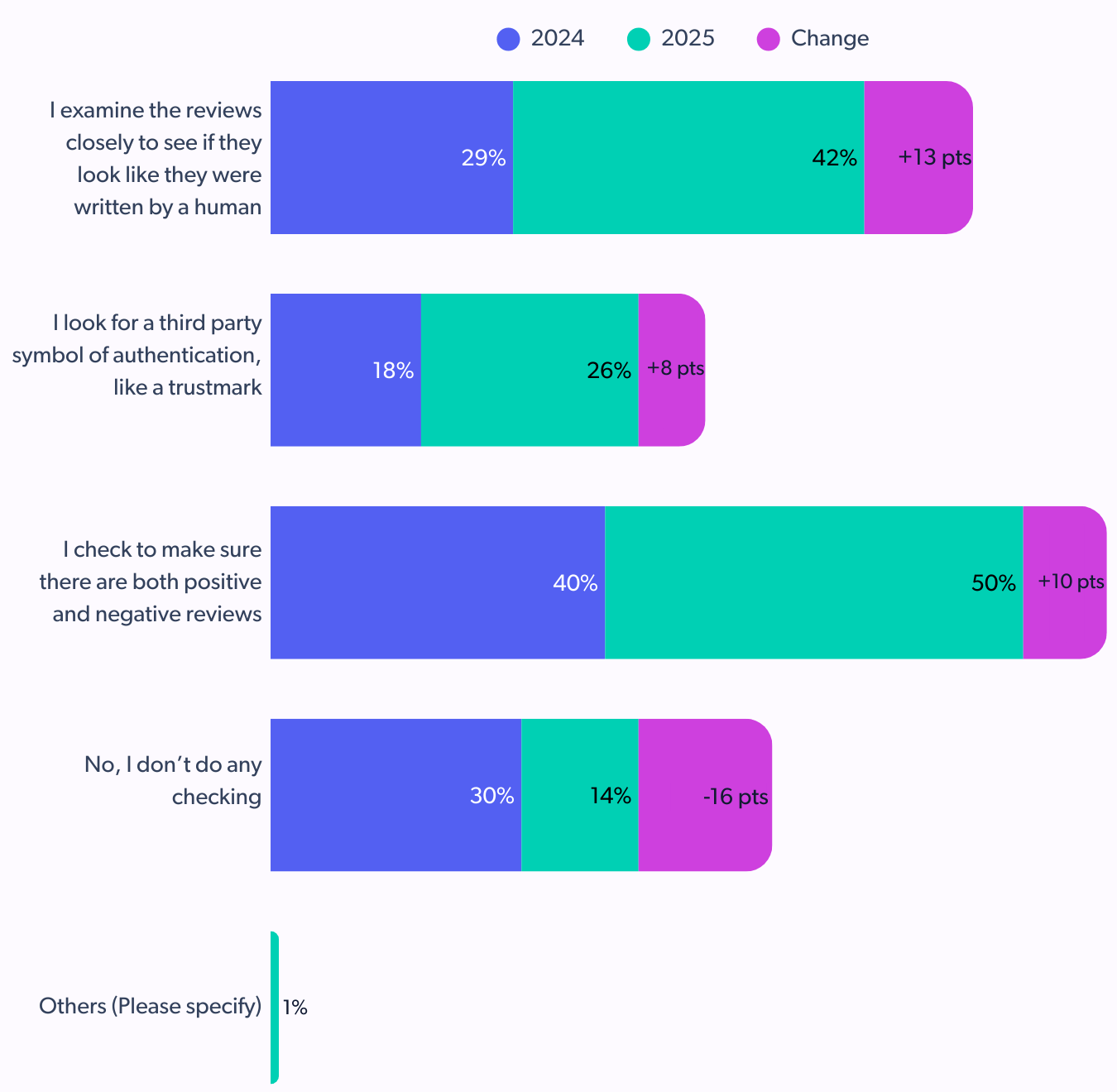
Perhaps the most significant finding in this area is the declining acceptance of AI-generated content.
14. Blanket acceptance of AI-generated content has fallen from 33% to 20%
This 13-point decline suggests a growing skepticism and avoidance of AI-generated content, with fewer shoppers indifferent to its presence. Brands need to be mindful of this growing sentiment and prioritize genuine, human-created content to build trust.
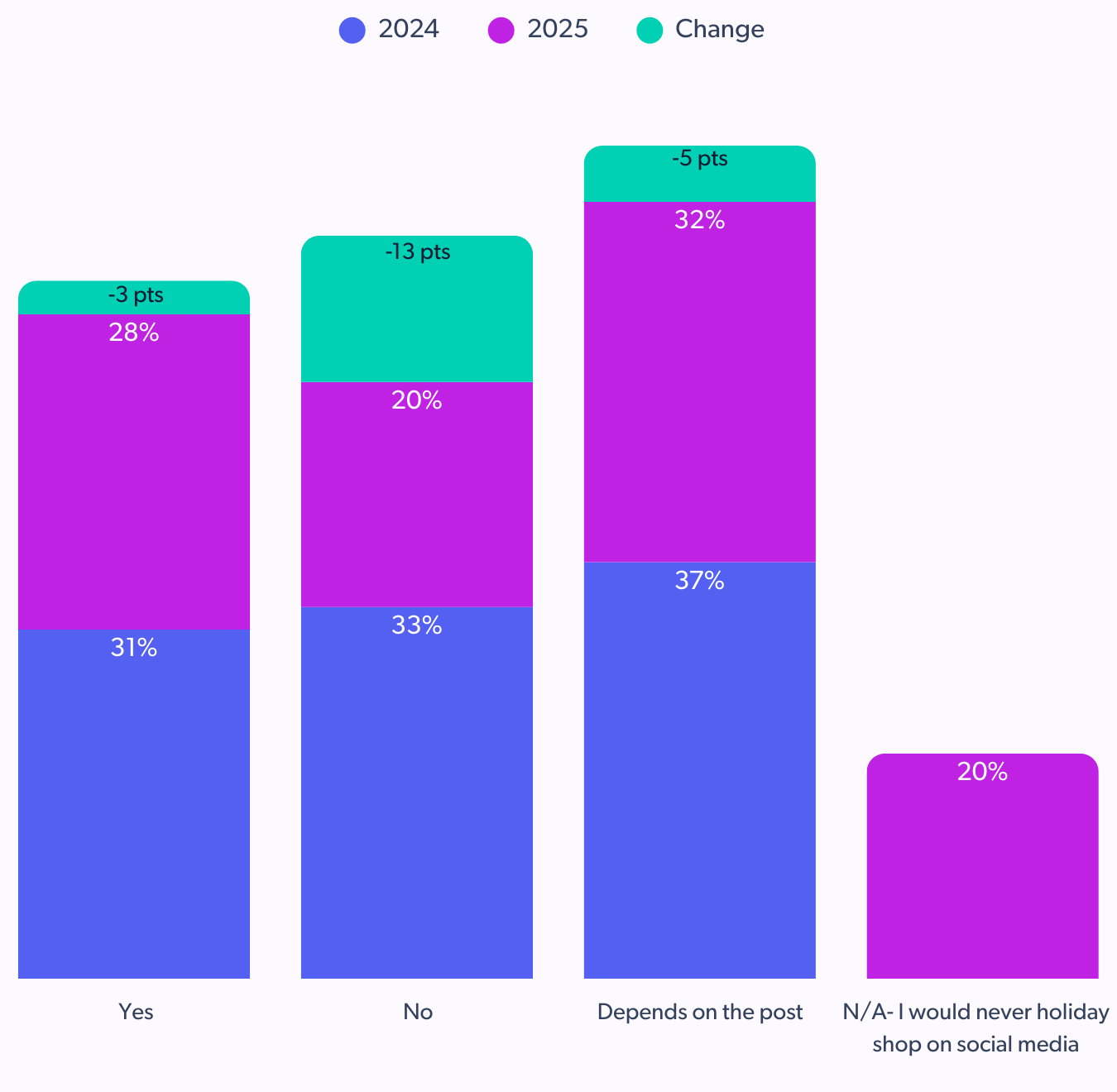
The holiday equation for 2025-26: A final thought
The 2025 Holiday Consumer Shopping Report paints a clear picture. The landscape is more nuanced, intentional, and digitally driven than ever before.
For brands and marketers, understanding the rise of the smart holiday shopper, one who values trust, timing, and genuine content, especially on platforms like TikTok, will be the key to unlocking success in the upcoming holiday seasons.
Brands adapt to these evolving demands, crafting authentic experiences that resonate with a generation of shoppers who are more discerning, digital, and deliberate than ever before. The holiday season is no longer just about sales; it’s about building genuine connections in a rapidly changing world.





